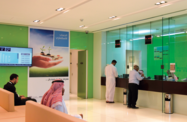Proposed changes to Saudi Arabia’s capital markets regulations could be fast-tracked by authorities, paving the way for increased participation from international investors.
In May the Capital Market Authority (CMA) unveiled a draft of updated regulations designed to relax restrictions on foreign ownership, building on a move to open up the exchange to foreign investment in June 2015.
Mohammed Al Jadaan, the chairman of the CMA, mentioned in an interview with international media in July the possibility that the reforms might be phased in as early as this year, ahead of the scheduled mid-2017 date.
Opening investment doors
The CMA’s draft regulations ease many of the restrictions currently faced by international investors looking to participate on the Tadawul.
Significantly, the regulations lower the entrance barrier by decreasing the minimum limit for the assets a qualified foreign investor (QFI) has under management from SR18.75bn ($5bn) to SR3.75bn ($1bn). This greatly expands the list of prospective investors, allowing for second-tier funds to buy into the market.
The CMA also aims to lift the ceiling on the level of shares a QFI may hold in a listed company, with the maximum limit raised from 5% to 10%. The restriction on the total number of shares QFIs in all categories can own in a listed company, however, will remain at 49%.
Meanwhile, the pool of financial institutions that will be allowed to invest in the exchange is being deepened to include government funds, university endowments and other entities approved by the CMA. QFIs may also choose to engage with a Saudi or non-Saudi portfolio manager.
The high bar set for QFIs to enter the market was one of the main reasons the opening of the Tadawul to international investors did not generate greater inflows, according to Ahmad Nasralla, CEO of investment firm Maceen Capital.
“The opening of the market to QFIs has not attracted enough foreign investors for various reasons. One of the main obstacles has been the high capital threshold required for interested companies,” he told OBG.
In the first nine months since the CMA sanctioned investments by QFIs on the Tadawul, response was muted. According to data from Jadwa Investment, between July 2015 and March 2016, the net capital inflow from foreign investors was SR793m ($211m), representing 0.1% of the Tadawul’s total market capitalisation.
Emerging investment opportunities
According to some industry stakeholders, even once the reforms are implemented, other conditions will likely need to be met before greater numbers of foreign investors move into the market.
“The initial opening up of the market to foreign investors saw a limited take up, but with the imminent changes to the rules we are expecting more interest. The biggest move into the Saudi market by foreign investors is expected when we become part of the MSCI which will lead to fund managers allocating a proportion of their portfolio to the Saudi market,” Khalid Nasser Al Muammar, CEO of Saudi Hollandi Capital, a Saudi Arabia investment firm, told OBG.
The path to facilitate that move may be laid shortly, with MSCI issuing a statement in June saying the planned reforms by the CMA would improve Saudi Arabia’s chances of being rated as an emerging market.
In May the CMA also announced it intends to introduce securities lending and covered short-selling. As has initially been the case with the liberalisation of the QFI regime, the new regulations are set to be issued before the end of the first quarter of next year, though these reforms too could be brought forward as market demand grows.
Oxford Business Group is now on Instagram. Follow us here for news and stunning imagery from the more than 30 markets we cover.

